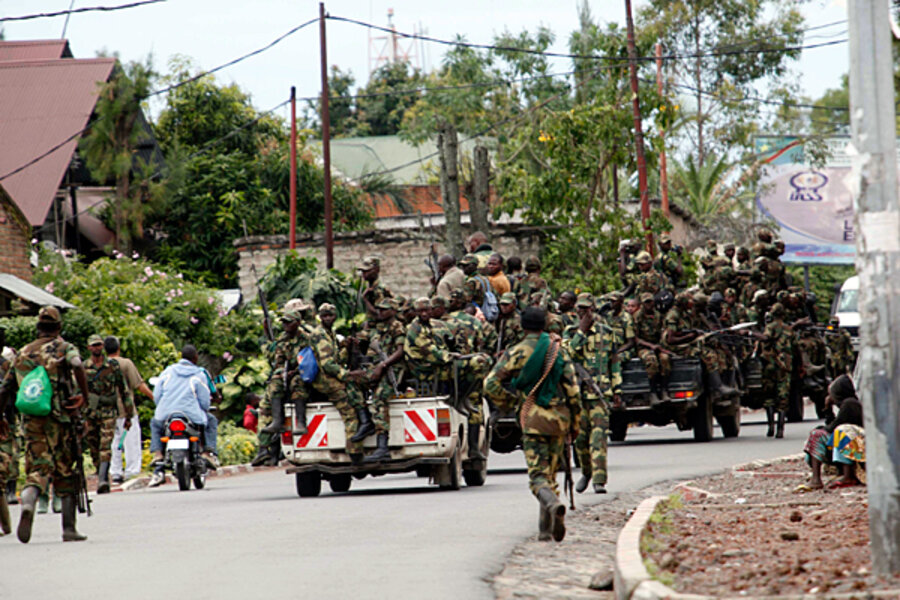Aid workers, civilians flee as rebels take key DR Congo city
| Nairobi, Kenya
Tens of thousands of civilians were fleeing and international aid workers evacuating Tuesday as a rebel army in the eastern Democratic Republic of Congo took control of the main city in the country’s east.
Goma fell to the M23 rebels after Congo’s government Army deserted the city, which is home to more than 1 million people and host to hundreds of charities and a large United Nations base. The rebels had swept south from the forested hills to the north and, during five days of fighting, won control of town after town on the road into Goma.
“There was a lot of noise of fighting in the north of the city early this morning, but then it stopped, and just some two hours later, I saw the rebels marching past my house,” says Joachim Kabori, a travel agent in Goma. “They are not being aggressive, they are disciplined. Many people are welcoming them, and they truly control Goma now. There is no representative left here of the government or the FARDC [Congo’s Army].”
Congo’s government in the capital, Kinshasa, more than 1,000 miles to the east, vowed that it would not negotiate with the M23, raising fears that it will order its troops back to regain the city, leading to civilian casualties.
The rebel movement is made up of as many as 2,000 troops who deserted Congo’s national Army in April, claiming that they were not being paid properly and their officers were not being promoted. Those were promises made in a 2009 peace deal that ended an earlier rebellion by many of the same soldiers, mostly from the Tutsi tribe that claims it is marginalized in both politics and military strategy in Congo’s east.
Goma was last threatened in 2008, by another mostly Tutsi movement called the CNDP, whose troops and commanders now largely make up the ranks of the M23.
The mutineers, led by Bosco Ntaganda, wanted for alleged war crimes by the International Criminal Court, fled into the countryside north of Goma along Congo’s border with Rwanda, and began fighting to wrest control of territory from the government.
It appears that their aim is to hold this territory as bargaining chips ahead of a new round of peace negotiations, when they will demand that the conditions of the 2009 peace agreement be honored. There have been repeated claims, however, that they earn significant income from mines in the areas that they now control, meaning that they would be unlikely fully to surrender.
Who will help internally displaced people?
During the past several days of fighting, more than 50,000 people fled rural areas north of Goma into the city and to open fields to its west. Most international aid workers have been evacuated into neighboring Rwanda, and the charities’ local staff are sheltering at home, raising fears for continued efforts to help the internally displaced people.
The world’s largest United Nations peacekeeping mission, known as Monusco, is based in Congo, but its mandate does not extend to stopping the rebels' advance, and its troops stood by as they entered Goma.
A report to the UN Security Council in October accused Rwanda and Uganda, which also neighbors Congo, of arming and financing the rebels, a charge that both countries have strongly denied.
Rwanda claimed on Monday that Congolese troops shelled its territory, raising fears that the conflict could escalate across their shared border.
When Rwanda and Uganda invaded their giant neighbor in 1996, it sparked a decade of conflict in Central Africa that left as many as 5 million people dead, mostly from hunger and disease. Rwanda’s foreign minister, Louisa Mushikiwabo, said on Tuesday that her country would “not rise to the provocation” from Congo, which she accused of “dangerous game-playing.”







